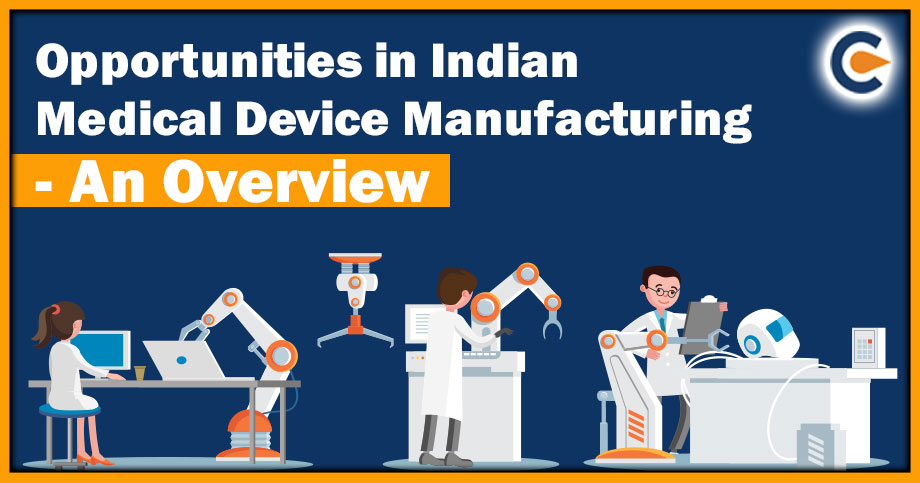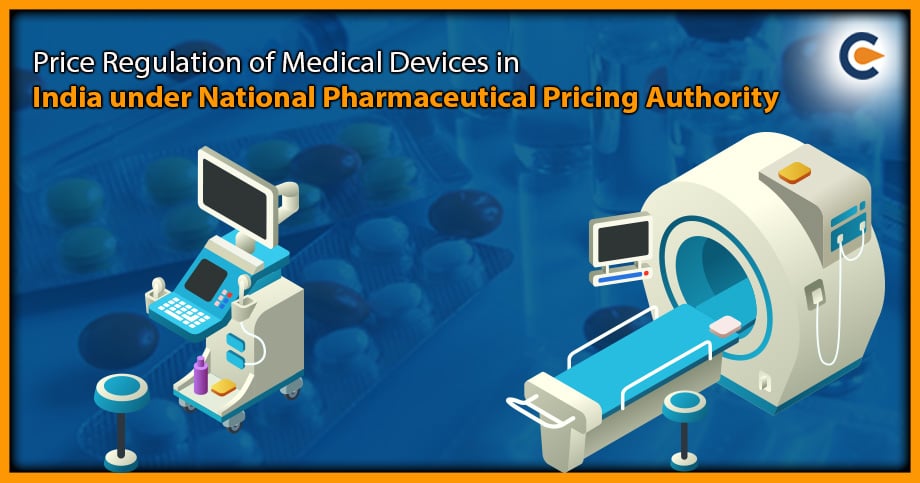In the more than ten years that the medical device manufacturing sector has existed, software and technology have spurred a growing emphasis on design and simplicity. Moreover, innovation helped the medical device industry gain dominance over the pharmaceutical sector. Modern technologically advanced, user-friendly devices are still in high demand, and their time to market is now shorter than before. Medical device manufacturers are under pressure from hospitals, healthcare facilities, and other sectors to be more secure, inventive, economical, and efficient. We’ll talk about some difficulties and possibilities for producers in the medical device sector in this blog.
Indian Medical Devices Industry
India is a key market for outsourcing medical equipment manufacturing. The industry has had tremendous growth opportunities over the past 10 years, and future development trends indicate even more potential. Many joint ventures, partnerships, and loan licensing procedures have had an impact on the Indian medical device industry.
Promoting innovation in the health sector Medical device sales in India are anticipated to reach $11 billion soon, making this industry a promising one for the country’s economy. The Indian medical devices sector, which is growing at an unprecedented rate, coexists with large international corporations and small and medium-sized businesses (SMEs).
The Indian medical device industry is predicted to grow significantly over the next three years, with a CAGR of 15%, to reach $50 billion by 2025. 100% FDI is permitted in both Brownfield and Greenfield projects using the automated technique. High FDI inflows are evidence of the confidence foreign investors have in the Indian market.
FDI[1] has reached $2.2 billion since April 2000; of this, $600 million has come in the last five years. Singapore, the United States, Europe, and Japan are major financial players. The majority of FDI has gone into implants, consumables, and equipment.
Indian Government Initiatives
The Indian government has launched numerous measures over the past five years to encourage the development of a thriving ecosystem for the production of medical devices there.
- The 2017 Medical Devices Regulations (MDR) Clinical research, medical device production, importation, sales, and distribution are all governed by the Medical Devices Regulations (MDR) 2017 regulations. Following international standards, the devices are separated into four groups.
- Medical Device Parks Promotion Scheme: To provide shared infrastructure, create a positive industrial ecosystem, and reduce production costs, the Indian government has approved the creation of four medical device parks.
- The market is anticipated to be worth $50 billion by 2025.
- India is the second-biggest manufacturer of PPE Kits, with a daily production capacity of more than 10 lakh PPE coveralls.
- India is the fourth largest market in Asia for medical equipment and one of the top 20 markets worldwide for medical items.
What is Production Linked Incentive (PLI) Scheme?
The flagship “Make in India” program has identified the medical device industry as a key sector, and the Indian government is committed to improving the business climate. To assist India in achieving its objective of dominating the global medical device manufacturing market, the Production Linked Incentive Scheme (PLI) Encouraging Domestic Manufacture of Medical Devices and the Production Linked Incentive Scheme for Pharmaceuticals (PLI 2.0) were introduced.
The PLI scheme, as the name implies, is a program that provides incentives to domestic industries to increase domestic production. When this occurs, specifically tailored products emerge that cater to a specific niche of the target audience. Domestic businesses also contribute to lower import costs. According to the PLI scheme, the government encouraged domestic companies and establishments to establish or expand manufacturing units to increase production, in exchange for government incentives on incremental sales.
Drivers of Growth
- By 2028, India is anticipated to have a population of 1.45 billion, making it the most populous nation on Earth.
- India’s life expectancy is expected to increase from its current 67.5 years to 70 years by 2025.
- Change in Disease Burden: In India, non-communicable diseases (NCDs) account for 60% of all fatalities and 50% of the disease burden.
- Preferences Change: a rise in the prevalence of lifestyle problems, a change in attitudes towards preventative healthcare, and an increase in health knowledge.
- Increasing Middle Class: Throughout the next ten years, 73 million Indian households will become middle-class, increasing their purchasing power across a variety of goods, including medical equipment.
- Growing Disposable Income: 8% of Indians will earn more than $12,000 annually by 2026.
- Health insurance: Around 20% of Indians have this type of protection. This number is expected to rise with rising wealth and urbanization.
- Due to India’s comparatively inexpensive cost of healthcare, medical tourism is on the rise. More than $2 billion is invested in India’s healthcare industry. The need for healthcare and medical equipment has increased due to medical tourism.
- Governmental Support and Incentives: 100% FDI approved in Greenfield and Brownfield projects, fewer entry barriers than other industries, and a diverse and active start-up environment.
Key Challenges in Medical Device Manufacturing
Medical device manufacturing in India faces several major obstacles, including inadequate infrastructure and logistics, congested supply chains, and exorbitant financing costs.
Even while the government is working to streamline rules and paperwork, the environment is still complicated and is characterized by the existence of numerous powerful institutions at both the state and federal levels. Moreover, India has some of the lowest per-capita health spending in the world.
Although it is encouraging that the government is emphasizing independence, the improvements require both continued financial and policy support from the government. However, the recent announcement of funding for US$425 million in production-linked incentives for domestic manufacturing as well as another US$52 million for infrastructure financing in medical parks is anticipated to increase local production in the Indian medical device industry.
Opportunities in Medical Device Manufacturing
India’s manufacturing of medical devices is still in its infancy. The medical device sector includes everything from pain management to patient monitoring. As the epidemic strikes, the manufacturing sector is confronting numerous difficulties on a global scale. A rapid surge in demand was observed for some products, such as oximeters and temperature monitoring devices, which were not previously in high demand. Medical equipment manufacturers eventually had their chance. Governments are also developing programs like PLI and the medical device park to promote manufacturers and enhance production.
According to the Atmanirbhar-Bharat vision, India should produce products not only for the domestic market but also for the global market. The benefits of this include raising knowledge of our independence and ability to meet consumer demand. We are aiding them as a Turnkey Project Consultant for their regulatory and production requirements because many industrialists have responded favorably to these initiatives and have begun investing in the manufacturing of medical devices.
The Made in India initiative benefits local manufacturers because it emphasizes boosting the economy through domestic output. The need for new equipment and a quality-focused monitoring system intensified as the new disease and the pandemic continued to rear their heads. Manufacturers of medical devices currently have a big growth opportunity. To expand the market, the Indian government is investing in R&D and 100% FDI in medical device production. India is a popular location for medical device manufacturing because it is home to many inventive and technologically advanced entrepreneurs. The largest issue facing the Indian medical device manufacturing sector is developing cutting-edge medical devices that can fulfill the needs of the moment.
These difficulties can serve as a springboard for improving the healthcare industry. Local production of these devices presents a significant possibility for making high-quality diagnoses. The proper entrepreneur and cutting-edge technology can provide individuals with access to top-notch medical care and diagnostic tools. During a pandemic, self-assessment devices see rapid proliferation. Devices including oximeters, blood pressure monitors, and home glucose testing equipment represent the potential growth sector. The pandemic crisis made immunization more important. Manufacturers of medical devices must be informed of the most recent rules, which shed light on regulatory developments.
Conclusion
While there are many prospects in the medical device industry, India must keep working to foster a supportive environment for domestic medical device production if it is to take a significant place in the post-pandemic world. India will need to rethink its long-term plan for advancing this industry. First and foremost, attention should be paid to improving the competency of the Indian medical device industry through skill development, upskilling, and reskilling in line with technological and medical improvements. The expansion of opportunities and access through cooperative policy support for the supply and demand sides of the medical device business should be the second goal.
Although the government has implemented various initiatives and policy changes to support the medical device industry, there is still room for growth. For the efficient use of resources and scalability, it is essential to have an ecosystem of important players, including leaders from the medical device sector, the government, and academia. The roadmap should also emphasize innovation and R&D as key components of the ecosystem supporting the manufacture of medical devices.
Also Read:
Four Prominent Benefits Of Drug License That You Must Know
What Is The Importance Of A Medical Device Certificate In India?
A Step By Step Guide For Registration Process For Medical Devices In India













